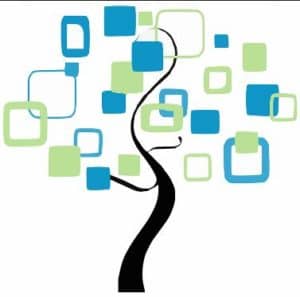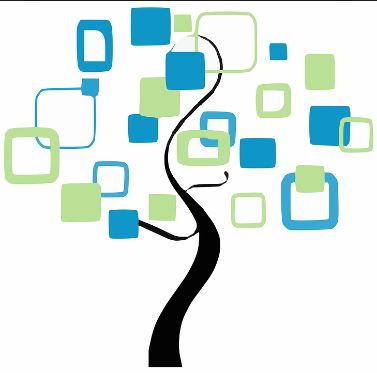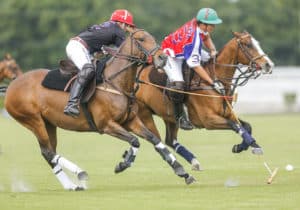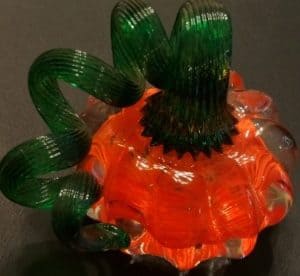 I grew up with an awkward middle name: Lincoln. It wasn’t exactly the pinnacle of cool and hip. As a young child in the ‘70s when most of my friends had middle names like Ann, Marie and Jean, I was well-aware that Lincoln was not a name to be shared out loud if I could help it. The only folks who knew this secret information were the local bank teller and the pediatrician.
I grew up with an awkward middle name: Lincoln. It wasn’t exactly the pinnacle of cool and hip. As a young child in the ‘70s when most of my friends had middle names like Ann, Marie and Jean, I was well-aware that Lincoln was not a name to be shared out loud if I could help it. The only folks who knew this secret information were the local bank teller and the pediatrician.
As is often the case with family history, details began to emerge as I matured. Soon I realized that my dad had the same middle name, as did his father. By fifth grade, when we began to explore our heritage in school, I started asking more questions and gradually the family lore was revealed. Lincoln had been a last name, and the family had wanted to carry that name on – thus the awkward middle name. Why? “Well, you’re related to Abraham Lincoln, of course.” Hold on! What?? That was a game changer. More comments were being tossed around: “Somehow you’re related through the Tupper line.” “Yes, there was an Eaton. I think a Harriet, from Hingham, MA?” “And there is that Mayflower connection, you know.”
Turns out, I didn’t know. Not at that age, but I was beginning to take note. My father didn’t put a lot of clout in genealogy or family lineage. “Be the best you can be, and serve others” was his unspoken motto. For the most part, I agreed. When I was in my twenties, I would not have placed the subject of genealogy high of my list of interests. After I married, I changed my name, replacing Lincoln with my given surname. That horrid middle name was behind me. Still, my husband was curious. Could those stories really be true?
It wasn’t until I had two Eurasian daughters that it seemed important for them to know about their Chinese and American heritage. When they told fellow students at school that they were related to the 16th President of the United States, they were confronted with disbelief. How could someone who looked like them be related? “Well, Lincoln had dark hair too,” I told them. But where were the facts?
I began to gather a few family archives from around my parents’ house: the two volume set of the Tupper Family History, a half-hearted family tree, a list my mother had started connecting me back to General Israel Putnam. I tried to Google the Lincoln family tree. Still, I couldn’t quite make the connection back. While I was collecting pieces that would eventually fold together into the family quilt, I had lots of gaps and unravelings.
It wasn’t until I took a spontaneous trip to the Family History Library in Salt Lake City that the dots started to connect. A volunteer helped me set up an account on the online database called Family Search. Patiently she walked me through, inputting my parents’ information, then my grandparents’. Each piece was verified with the vital records. It took about an hour, but when I walked downstairs, I was given an iPad which connected to a wall display. Lo and behold, up popped the famous people in my lineage… and there was President Abraham Lincoln!
When I returned home, however, I wanted to fill in the tree even more. Good thing there wasn’t any shortage of resources at my fingertips. Not only can you have access to various databases through your library card (search under “Books and More” on the norwoodlibrary.org website for “Databases”), including Ancestry Library. This is the “In Library Use Only” version. Some of the Norwood newspapers are now digitized and available online as well, so one can research family stories in the news.
We also have a genealogical expert, Joe Petrie, who will be offering several one-on-one sessions in the fall for those who would like to learn how to do more in-depth online research. These sessions will be two hours long on select Mondays, Wednesdays and Fridays in September, October, and November. Be sure to contact our Reference Desk (781-769-0200 x110) to reserve a spot. They are offered at no charge. What an amazing opportunity!
For online research assistance, you can also check out Genealogy Online by Elizabeth Powell Crowe. Here you will “discover how to start your search, find specific types of genealogical information on the Web, and use online tools effectively and efficiently.”
Other helpful resources are in print, too. I found one book so easy to use. The whole topic can be a bit overwhelming, but Genealogy for the First Time by Laura Best made it approachable. Best begins with the chapter “Where do I Start?” and she holds the reader’s hand throughout. In her opening words she says, “Genealogy is, metaphorically speaking, one large puzzle. You may pick up the pieces in any order to place them. However, some pieces will be more difficult to place than others and may need to be set aside until other pieces are fitted together to give better reference and framework.”
As you become more engrossed in your research, your questions will become more difficult. Like, did your great-grandfather really come over on the Rotterdam steamer into Ellis Island in 1896? And was his name originally Bremmer before officials changed it to Brimner upon his arrival? They Came in Ships by John P. Colletta, Ph.D. guides you through your ancestors’ arrival records. There are resources that aide with those picky problems too. For example, there is a series of books for a variety of ancestries. A Genealogist’s Guide to Discovering Your Scottish Ancestors by Linda Jonas and Paul Milner is one of many, also available for English, Italian, and German ancestors.
Likewise, if you have deep roots in New England, the Genealogist’s Handbook for New England Research by the New England Historic Genealogical Society might be your cup of tea. And if you’re feeling like you’re hitting a brick wall, The Family Tree Problem Solver by Marsha Hoffman Rising could offer a ladder up and over those problems.
If you’re already an expert in genealogy, the book Your Guide to Cemetery Research by Sharon DeBartolo Carmack would not be a surprise to you. That said, I was amazed at the research that people do right at the gravesite. Carmack provides guidance for everything from Records of Death and how to read them, to searching the cemetery for clues and rubbings.
Of course now that people are rushing to get a 23andMe personalized report, there are family stories emerging that were hidden for years. Sometimes they can be very revealing. A popular memoir by Dani Shapiro called Inheritance: A Memoir of Genealogy, Paternity, and Love addresses this very topic. When Shapiro was doing her own genealogical research, she submitted her DNA for analysis on a whim, only to discover that her “beloved deceased father” was not her biological one. Shapiro addresses those secrets within families and what it means to unlock them.
That day in Salt Lake City I was so grateful to have some of the pieces of my family puzzle come together, but that didn’t mean the whole puzzle was complete. Only part of it. If I choose, I can head down more rabbit holes with the family tree. If you decide to do the same, I hope some of these resources hold the key.
Nancy Ling is the Outreach Coordinator at the Morrill Memorial Library in Norwood, MA. Look for her article in the July 25, 2019 issue of the Transcript and Bulletin.




